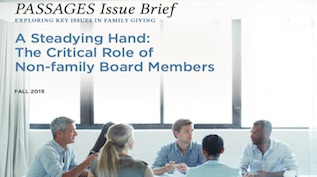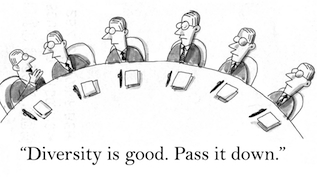
Please see the NCFP Content Collection on Racial Equity, Diversity, and Inclusion for additional information and resources.
Interested in learning more about this topic alongside your peers? Consider signing up for a current or future cohort of NCFP’s Racial Justice Learning & Action Network.
Featured Resources


A Place at the Table: Non-Family Membership on the Family Foundation Board
Passages Issue Briefs
Open Calls in Philanthropy: An Uncommon Approach that Can Reveal Weaknesses and Maximize Strengths
Blog Post
Families In Flux: Guidelines for Participation in Your Family’s Philanthropy
Passages Issue Briefs
Passing the Baton: Generations Sharing Leadership
Passages Issue Briefs
Choosing and Preparing Your Grantmaking Successors
Passages Issue BriefsCommunity Board Members: Panta Rhea Foundation Recruitment Documents
In 2020, the board of directors for the Panta Rhea Foundation announced it’s intentions to expand the board to include leadership and representation from outside the donor family. In 2021, after a long search involving trusted partners & grantees, the foundation welcomed trustees from the broader social justice and nonprofit community, Solomé Lemma and Cedric Brown. The following documents share various aspects of their community board member recruitment and interview process.

Community Board Member Recruitment Update and Timeline
Sample
Community Board Member Interest Form
Sample
Community Board Position Profile
Sample
